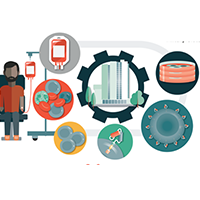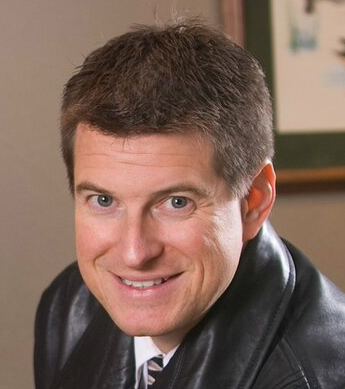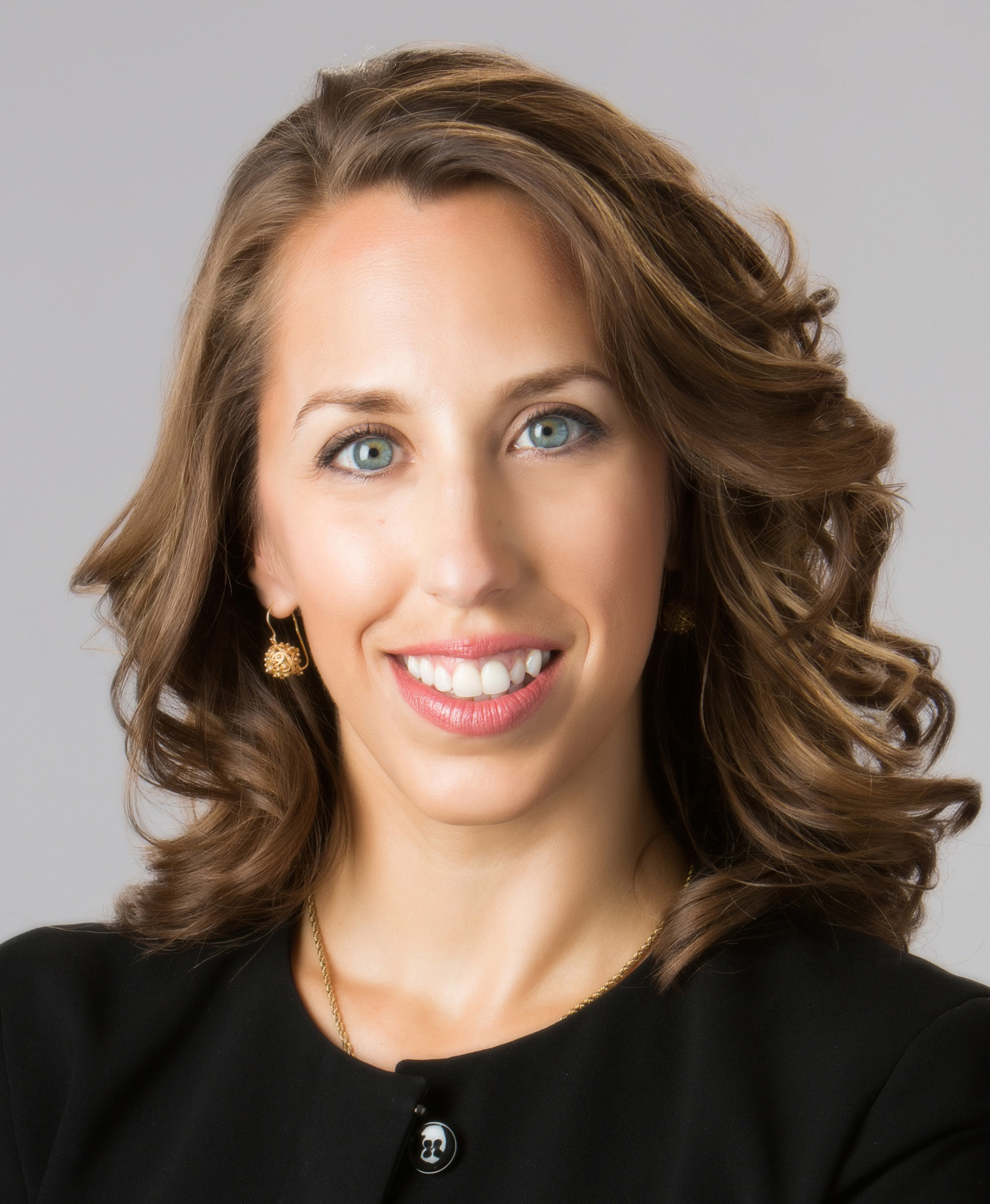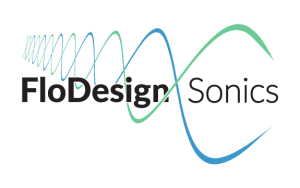Innovative Technologies for CAR-T Manufacturing: the Key to Commercialization
Cell Gene Therapy Insights 2018; 4(4), 337-344.
10.18609/cgti.2018.037
The field of cell and gene therapy is experiencing tremendous progress and continued investment. Do you feel this excitement and optimism is warranted?
SK: We are currently at the intersection of societal needs and investments flowing. I like to call this doing well by doing good. We have great data and efficacious drugs. I often hear this field referred to as the fourth pillar of modern medicine and I truly believe that if Edison or Tesla were alive today, this is what they would be working on. It’s a legacy to make a dent into curing cancer and certainly something I feel passionate about being a part of. We are very excited to have the money flowing into the development of these life saving drugs and help bring them to the masses.
DK: Investor confidence is clearly linked to some of the successes we’ve seen more recently. In my experience, and in the industry, I believe that what we’re seeing is something akin to the start of monoclonal antibodies from the late 90s to early 2000s. Looking at the adoption curve for cell and gene therapy, I think we’ll see something very similar in the long run for this sector. Consider what the JP Morgan healthcare conference was covering 5 or 10 years ago to now. It’s changed dramatically in that time.
I do think the investment levels are warranted. I believe that what we’re seeing is not just for blood cancers, leukemia, and lymphomas, but ultimately how these therapies can apply to solid tumors and other indications. Opening up the field like this will really change things dramatically in our sector.
What do you see as the critical issues across the commercialization pathway that need to be addressed in order for cell and gene therapies to become that fourth pillar of medicine?
SK: The bottleneck is around manufacturing. We hear it at all the conferences, and we hear it like the moon-shot cry. I believe it was Juno Therapeutics that said that there was currently not a solution, so they must build it. We see bottlenecks around concentrate wash, reagent speeds, cell sorting, and this manifests itself in cost. This is where we come in. We’re excited about the opportunity of seeing ourselves as the Henry Ford of cell and gene therapy: manufacturing for the masses. We see acoustics as a parallel to the advent of the assembly line, by integrating and stitching together processes in an elegantly simple manner to improve quality, while lowering costs. For cell and gene therapies the process itself is now the product, so innovation is needed to improve the process. Currently, the tools being used are centrifuges and filters, which are major hurdles within the manufacturing workflow.
What do you think has led to the current lag in manufacturing?
DK: What we’re seeing is a typical dynamic that broadly occurs in bioprocessing. Once a discovery is made, there’s a tremendous push to establish the efficacy, safety, and viability of a given therapy. It’s also typical in biopharma to think of manufacturing as secondary to making sure their therapy is viable. What we’re seeing are the limitations with the current industry approach. A lot of technologies initially intended for other applications are being applied to CAR-T, and other cell and gene therapies. However, these technologies may not be the most efficient, cost effective, or productive because they were not purpose built for CAR-T cell therapy.
FloDesign has intentionally set out to create a technology, that will address those pain points specifically in cell and gene therapy. We’re finally seeing something that’s purpose built now, and are engaging in a lot of highly productive industrial support through co-development projects. Within our group, we have partnered with a very large biopharmaceutical leader.
SK: Closed and automated processes are absolute musts, but we do need a paradigm shift in how we think about this. The current cast of equipment available to cell and gene therapy manufacturers tends to be somewhat forced onto them, and the technology is not as flexible as it needs to be. The industry needs equipment that’s more modular and can take on process steps independently, but also be able to integrate and consolidate into the entire process for overall savings.
Do you agree that integrating these methodologies will create a step change for CAR-T, and cell and gene therapies?
SK: Yes, I do agree. The closed and automated system is certainly the baseline of what’s necessary. This is said over and over within the industry. However, we’re focused on developing technology from the ground up. To achieve this we are working closely with our customers. An example is our co-development with a large biopharmaceutical company, we’re the engineers who can transition their science and processes into an industrialized platform which will help them achieve their life saving goals.
DK: I think systems should ultimately be closed. When we think about how biopharma and biotech go along their timelines for clinical development, these timelines become tighter and tighter. They’re required to produce products and ensure that they’re being manufactured at spec. What we’re seeing is that our customers may lock in an initial open manufacturing process for small indications, requiring only small volumes, and may not yet need a streamlined process. The real opportunity for us and the industry is when there is a need for higher volume indications, where customers want a process that can be easily closed, reproduced, and scaled out. We also need to think about broader markets and market access beyond the US. We could think of these first indications as being practice before a big game. We’re in it for the big game, to ensure scalability from a customer’s point of view.
SK: There is a lot of focus on the manufacturing side to support commercialization. All the vendors are focusing on the manufacturing technologies, closed system, and integration. But to me, the closed system and automation is really a band aid. The solution is making inefficient processes more efficient. As an example, in bioprocess analysis with monoclonal antibodies, the traditional process was to use stainless steel with little automation. The solution there wasn’t just to automate because there are inherent issues with bioprocess in stainless steel. The real solution was the game changer of going to single use systems. I think that’s the analogy here. We need a fundamentally different technology to drive the solution, and then build the automation and closed system around it.
When do you consider speaking with clients about updating the manufacturing process of their product?
DK: The industry is starting to think about this earlier and earlier. While there can be a lot of kludging of processes at the early stage, there is a recognition that the sooner you get that tied down, the more robust and readily transferred your process is. Then you can start to think about the manufacturing value chain, integrating all the different steps. When we look at the steps in discrete unit operations, interconnecting them is ultimately going to yield a closed, integrated system with automation, and process robustness. But, when a technology is fundamentally different from what’s currently being used, such as acoustic cell processing, it’s best to start with that technology from the beginning of process development. Prior technologies might work OK, but OK is not going to get us to a reality where these life-saving therapies are accessible broadly in global markets. We feel acoustic handling as a platform technology is well suited and tailored to these needs for immunotherapy cell processing.
SK: It’s critical that we work very closely with our clients and those in the industry. Right now is a very interesting time – when you go to conferences, there is a lot of side conversation and intermingling of all the players in CAR-T and cell and gene therapy talking to each other and sharing stories and challenges. There’s a lot of communication within the industry. That tells me that there’s unmet needs and challenges that people are trying to tackle. That’s where the partnership of vendors working very closely with the end users to solve these problems is very important and why, in addition to all the product focus we have, we’re also focused on co-developments.
Could you elaborate on the specifics of the acoustic cell processing technology that you’re developing?
SK: FloDesign uses acoustophoresis principles to manipulate particles, in this case cells, in a fluid suspension. An emitter in our system generates ultrasonic waves across a completely closed flow cell where fluid and particles are passing. These waves are bounced back by a reflector on the opposite side of the flow cell, standing waves are created. An acoustic potential field is created which exerts gentle forces on the particles. Parameters such as the wave length and wave angle along with material parameters such as density, compressibility and buoyancy are balanced in a way to suspend certain particles and allow others to drop out. The end result is a non-invasive selection process, occurring in a closed system operating continuously.
We created this technology out of academic research here in Western Massachusetts at Western New England University. We’ve been around since 2010 and currently employ 33 people in the company now. We see the real opportunities in acoustic cell processing, is around cost saving – by potentially eliminating the reagents and beads normally required for cell separations. We understand that this is one of the most expensive steps. Another expensive step in the process is around viral vector usage, both in the fabrication side and the usage in transduction steps. These are the two areas we are focused on. These are areas where our customers are seeing improvements.
Typically, reagents use magnetic separation which are very expensive to manufacture. We’ve developed a biocompatible bead that could be sorted using acoustic technology. It can even be multiplexed so that we can differentiate between different cell types within the same batch. This is where we see some cost savings and relief from a big pain point.
The other area of improvement is around the use of viral vectors in the transduction steps. We are using acoustics to bring the cell and vector together. It’s like creating a bunch of tiny planets where the viral vectors are the atmosphere and the cells are the planets. Driving the virus and cells together can allow us to reduce the amount of viral vector used. Our early data shows a significant reduction in the amount of viral vector required for the same multiplicity of infection. Ultimately, we’re working dilligently towards cost reduction, which we hear over and over as a need for the industry. Bead manufacturing, multiplexing, dissolvable beads for both positive and negative selection and the transduction step are what we are working on to reduce costs.
DK: There is a lot of interest from customers around concentrate wash and the upfront cell selection. We’re getting engaged in a lot of areas based on individual efforts by biopharma. They are asking FloDesign to look at either specific steps within the process, or into integrating some of those steps together through acoustic cell processing. We’re very excited to see how this will evolve into a step change for cell and gene therapy.
Cell separation is acknowledged by the industry to be one of the key challenges in CAR-T cell manufacture. Howcan we overcome this challenge to enable truly commercial-scale manufacture?
SK: The key here is working together. This is where those co-developments become so very important. Bringing engineers into the lab is working well. The only way we’re going to solve this and bring it to the masses is by driving that cost down. I think the acoustic solution that we’re providing for cell separation is a new engine. It’s an alternative that seamlessly stitches together and brings us towards our dream of an end to end solution. I think it’s a great opportunity, as I mentioned early on. Working together with pharmaceutical companies and bringing our solutions, I think we’re seeing a renaissance in medicine, and I couldn’t be more excited to be part of it.
DK: What we see in the space of specifically autologous cell therapy, there’s an inherent issue of a per patient process requirement. So when you’re talking about enabling commercial scale autologous cell therapies, this is a major stumbling block. I think there’s going to be more work done, particularly in the upfront cell selection. We believe that acoustic cell processing will dramatically minimize the capital investment as well as the operation to simplify the cell separation stage. This will essentially enable broader use of autologous cell therapies, because right now it’s clearly not scalable. We see, from industry conferences, that there is a consistent message around scaling out manufacturing to make the use of these therapies accessible.
What are some of the unique challenges in bringing a new technology to the cell and gene therapy sector?
DK: I’ve been in the industry for close to 20 years. What we see in the industry is that our customers are keenly aware and concerned about the major limitations of current processes. As we mentioned before, it’s a significant pain point. It absolutely has the attention of executive leadership, at almost all the top and up and coming players. That says a lot. For manufacturing to have that attention is not typical in our space. I believe what really concerns them is lack of ability to provide access to patients after finding that a therapy is successful. Ultimately, this is about patient outcomes, and making sure we can make this accessible.
Clearly, this field is very conservative minded with many scientists and engineers. Sometimes we like to see a lot of data before these technologies are implemented. I think FloDesign is doing a great job of producing data, providing the concept, and ultimately scaling that technology. I also know that there is time required to get those early adopters really moving on the technology. I think this harkens back to our experience with Wave and launching some other products. It takes a couple of years to get that early adoption, but once you see industry leaders adopting the technologies and employing them in operations, it’s a key tipping point for acceptance of the technology. We’re lucky to count on a few mavericks in the industry that are employing the technology in various steps and you’ll see more data as the year goes on from FloDesign.
SK: One of the challenges to bringing new technology into the space, is that there tends to be a very different set of requirements from customer to customer. The process and patient material is often times very different. We’re focused now, as was mentioned earlier, around the concentrate wash step, which is a very important part of the process, and ubiquitous throughout very many process steps. That’s our first entry into this space. We do have units we’ll be placing in 2018 and gathering some data with our early adopters. We’ll then be moving into the reagents, which is the acoustically cell sorted affinity line. Then into transfection and transduction enhancement then expansion. Then we stitch together these process steps all towards our end-to-end vision.
Affiliation
Stanely Kowalski III, Co-Founder, Chairman & CEO, FloDesign Sonics, USA.
Daniella Kranjac, Co-Founder and Managing Director, Dynamk Capital LLC, USA
Member of the Board of Directors, FloDesign Sonics, USA
This work is licensed under a Creative Commons Attribution- NonCommercial – NoDerivatives 4.0 International License.




